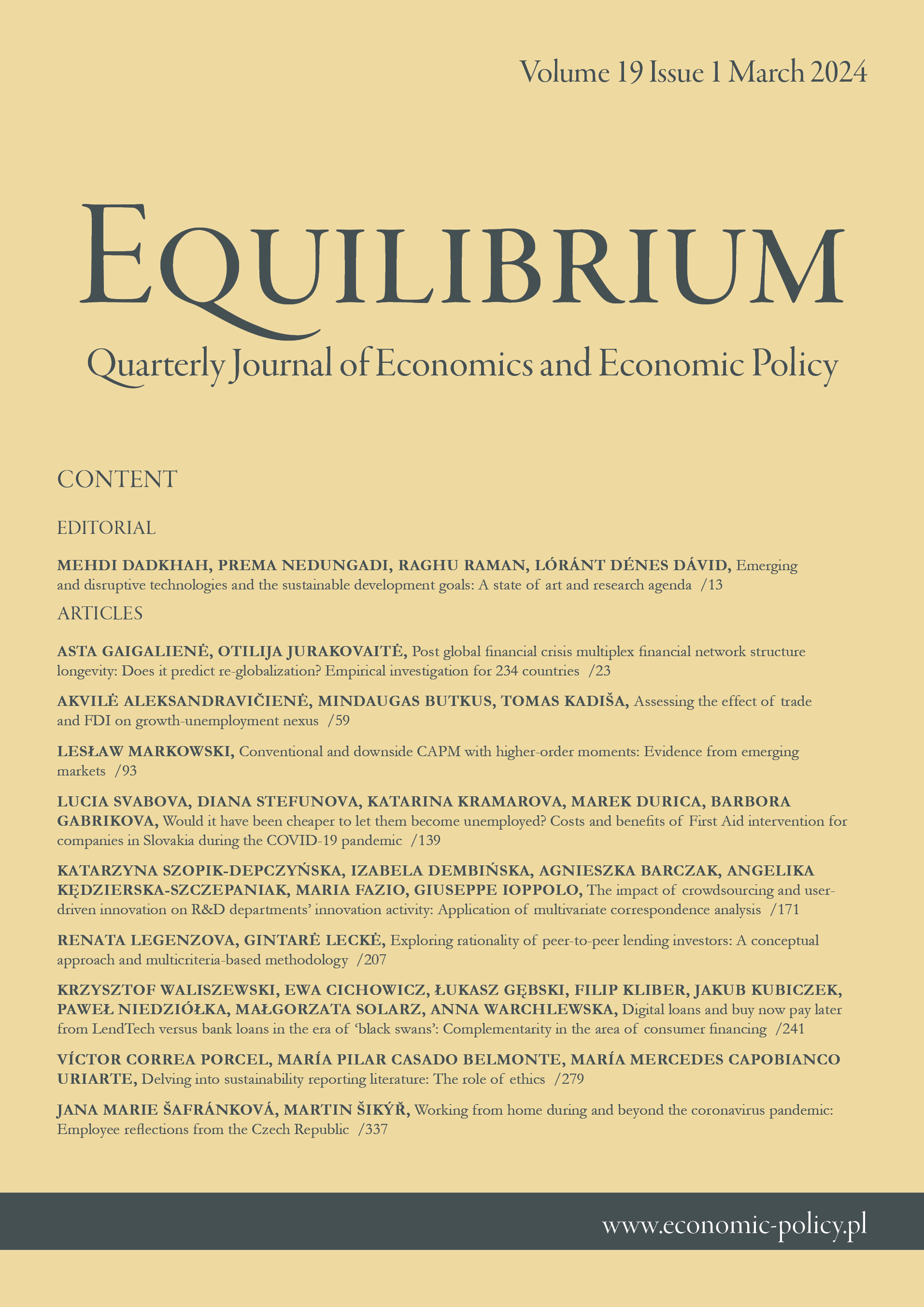Exploring rationality of peer-to-peer lending investors:
A conceptual approach and multicriteria-based methodology
Exploring rationality of peer-to-peer lending investors:
A conceptual approach and multicriteria-based methodology
Author(s): Renata Legenzova, Gintarė LeckėSubject(s): Financial Markets, ICT Information and Communications Technologies, Socio-Economic Research
Published by: Instytut Badań Gospodarczych
Keywords: investor rationality; bounded rationality; rationality criteria; peer-to-peer lending; online investing; financial digitalization;
Summary/Abstract: Research background: The shift towards globalization, technological innovations, and digital- ization has led to the emergence of various innovative financial products, such as peer-to-peer (P2P) lending. Characterised by digital solutions and easier access, P2P lending allows inves- tors to make quick and more frequent investment decisions. However, this can increase inves- tors’ vulnerability to behavioural biases, and therefore leave them open to potential losses. There is a research gap in understanding P2P lending investors’ rationality, including research methods tailored to the specifics of this innovative product.Purpose of the article: Objectives of our study is to propose a conceptual approach and mul- ticriteria-based methodology to measure the degree and type of investor rationality; to apply it in Lithuanian P2P lending context, and to explore the differences in rationality based on the investors’ sociodemographic characteristics. Methods: The data set represented answers to an online survey collected from 390 Lithuanian P2P lending investors. Three groups of criteria were employed to assess rationality degree and type: risk and return (reflecting utility maximization), use of available information, and be- havioural biases criteria. The rationality index was developed to measure the rationality de- gree of individual P2P lending investors; descriptive and cluster analysis were performed to assess the rationality type; t-test, ANOVA test and regression analysis were used to investi- gate its influencing factors.Findings & value added: The results indicated a moderate overall degree of P2P lending investors’ rationality, with bounded rationality representing 96,67% of the sample. Further clustering analysis proved that bounded rationality behaviour is not homogenous; therefore, measures taken to increase individual’s rationality should be tailored to their specific rational- ity type primarily focusing on low-scoring rationality criterion. Regarding sociodemographic factors, investors’ financial literacy was identified as the only significant and positive deter- minant of P2P lending investors’ rationality, reinforcing the importance of financial literacy in society.
Journal: Equilibrium. Quarterly Journal of Economics and Economic Policy
- Issue Year: 19/2024
- Issue No: 1
- Page Range: 207-239
- Page Count: 33
- Language: English

